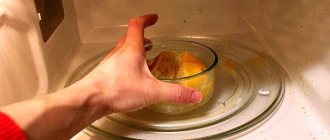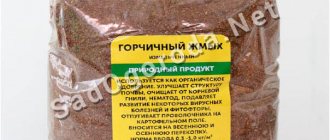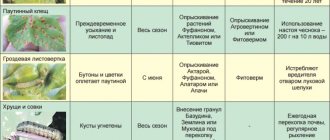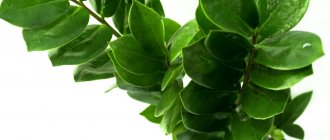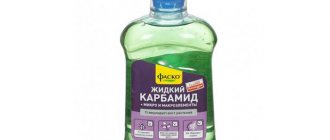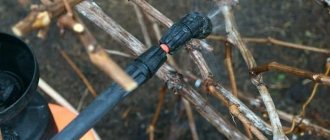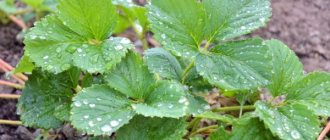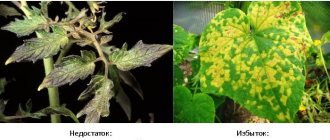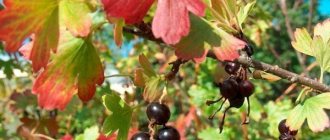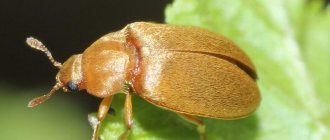The spicy seasoning has long been used by gardeners as an effective means of pest control. Absolutely safe for humans and crops, but destructive for beetles, aphids, wireworms, caterpillars, and mites. In addition, it is used in the treatment of diseases of garden crops, is merciless to weeds, and is excellent as a fertilizer.
Mustard is a reliable assistant for those gardeners and gardeners who prefer to protect their crops from chemical insecticides. But to achieve the desired effect, it is necessary to use natural fertilizer correctly.
Properties of mustard
The main quality of mustard that summer residents appreciate is its powerful healing and nourishment of the soil. However, it cannot be used in areas where cruciferous plants are grown. When using mustard in this case, there is a high risk of developing diseases in the main crops (for example, clubroot).
It is important to note that 2 varieties of mustard – blue and white – have beneficial properties for garden crops. They contain large amounts of nitrogen, which, during the decomposition process, well nourishes the soil. During the process of growth and ripening, mustard is enriched with valuable microelements, fed from the soil. Before flowering begins, the crop is mowed and then buried in the ground. A natural processing process occurs, due to which the upper fertile layer on the site is saturated with useful substances.
In addition, mustard has a number of useful properties for the garden:
- Inhibits the growth of weeds.
- Protects the soil from pathogens and infectious diseases of plants.
- Repels/destroys pests.
- Helps loosen and improve soil structure.
- Normalizes the acid balance due to the fact that it retains nitrogen in the top layer of soil.
Another important positive quality of mustard is that it is considered a high-quality mulching material. When used, it will be possible to protect the area from freezing in the autumn-winter period, as well as retain more moisture in the soil.
How to use mustard in site care is described in detail below.
Methods for controlling slugs and snails
If the garden has been attacked by shellfish, it is recommended to use mustard powder. The simplest, yet effective method is to sprinkle powder between the rows, as well as at the rhizomes of each plant.
Crushed,
dry mustard can be used not only as an independent means of combating snails and slugs. For a more aggressive effect on shellfish, it is recommended to mix mustard powder, hot ground pepper and vegetable ash in equal proportions. Such a composition can not only repel pests from crops, but also destroy uninvited guests when they come into contact with the hot mixture.
Victory Day over the Colorado potato beetle
Voracity and immortality are two virtues of striped insects. It is worth knowing that their diet does not include bitter or spicy foods. Mustard is not pleasant to them both in taste and smell.
Therefore, you should rush to try 3 methods of combating corolads:
- Processing potato tops. It is carried out at the beginning of crop growth or when beetles appear. A solution is prepared from water (10 liters), 9 percent vinegar (100 ml) and 150 g of powder. Spray so that the liquid gets on both the upper and lower parts of the leaves.
- Watering the soil. The soil near the bush and between the rows is irrigated abundantly with a concentrated suspension.
- Pollination of the site. In the evening, the spice is scattered throughout the garden. Pollen should cover the ground and plants in a thin layer.
With such a “helper”, neither pests nor pesticides are scary at the dacha. In this way, the farmer takes care of nature and his household.
Loading…
Destruction of aphids and caterpillars
To protect your garden from aphids and caterpillars, you need to prepare a solution - dilute 100 grams of mustard in a bucket of warm water. Leave for two days, keeping the temperature within +20/+24°.
Mix the prepared infusion with water in a 1:1 ratio, add 40 grams of grated laundry soap for every 10 liters. Stir the mixture vigorously, pour into a spray bottle, and treat the hangers.
To enhance the destructive effect, it is permissible to add baking soda to the solution. 60-70 gr is enough.
Mustard in the garden and vegetable garden. Application.
Mustard seed powder in the country will successfully replace dozens of chemicals. It is effective, cheap, accessible, environmentally friendly, safe for people and animals. A mustard seed is slightly more than 1 mm in diameter, but it contains an incredible amount of vital energy and benefits.
This is truly a magical remedy! And simple! Let's figure out how to properly use dry mustard in the garden.
How to use dry mustard correctly
Dry mustard powder lasts longer than aqueous infusion solutions, which lose their potency during any precipitation, including dense fog and heavy dew. If the weather is dry, the mustard effect from the treatment lasts about 7-8 days, sometimes 2 weeks.
Plants are sprayed with a solution of mustard powder early in the morning, in the evening after sunset or in cloudy weather, because in bright sunshine the moisture quickly evaporates, and the mustard remaining on the leaves can cause burns. Mustard does not accumulate in the peel and does not have any negative effects on plants.
Mustard for pests
Most often, mustard infusion in the country is used against insect pests. Unlike industrial insecticides, mustard does not accumulate in the soil and plant tissues. And it repels pests.
From the Colorado potato beetle
200 g of mustard powder (a pack) is diluted in a bucket of hot water (10 l) and left for 2-3 hours under the lid. Strain through several layers of gauze, add 5 tbsp. spoons of 9% vinegar and 50 g of coarsely grated laundry soap (a little less than a quarter of a piece) so that the mixture stays on the leaves longer. Spray potatoes, tomatoes, eggplants once a week or more often if it has rained or there has been heavy dew. If you water the soil with this product once every 1-1.5 weeks, you can get rid of wireworms.
From slugs and snails
These voracious mollusks will not go away completely, but we can prevent them from getting to the greenery in the beds if we periodically dust the row spacing or the top layer of mulching material with mustard powder. Mustard will burn the delicate skin of the slugs, and they will prefer to eat elsewhere. A spicy additive will enhance the effect - ground hot pepper and powdered wood ash. Everything is in proportions 1:1:1.
From butterflies and caterpillars
In 10 liters of water, carefully mix 1 glass of mustard powder and tobacco dust, cover with a lid and leave for three days. Then the plantings and row spacing are filtered and processed every 10-14 days until the end of the season.
From onion and carrot flies
Before planting, a mixture of wood ash and mustard powder in a ratio of 3:1 is poured into the furrows. After the onion feathers grow 5 cm, the same composition is poured into the rows and loosened the soil. Then the treatment is repeated after another 2 weeks. The same mixture is applied between the rows of carrots, parsnips, parsley, celery and other umbrella plants every 12-14 days throughout the season.
From aphids, ticks
Treating bushes and trees with a solution of mustard powder helps only if there are few pests, and also for preventive purposes. Dilute 100 g of powder in a bucket of water, leave for two days in a warm place, filter, dilute twice with water and combine with 40 ml of liquid soap.
The trees are generously sprayed with this mixture before flowering, without missing a single branch, then treated another 2 weeks after flowering and then every 15 days.
From fleas
Beetroot and cruciferous flea beetles love beets, radishes, radishes, cabbages, and daikon. Their harmfulness can be significantly reduced by watering the beds with mustard infusion. Dissolve half a glass of mustard powder in 10 liters of water and leave for 2 hours. Beets are processed starting from the emergence of seedlings and up to 4-5 true leaves.
And against the cruciferous flea beetle, which eats the leaves of plants of the cabbage family, add 1 tbsp to the described infusion. a spoonful of 70% vinegar essence. Plantings are not watered, but sprayed on the leaves. Repeat treatments every time new pests are noticed.
From powdery mildew
Mix half a glass of iodized salt and dry mustard in a bucket of water and pour onions with a watering can. This is done once a season: there will be no powdery mildew, and at the same time no onion fly.
From moths, honey moths, sawflies, codling moths
Pour 100 g of mustard powder with boiling water (10 l), leave for a day under the lid, filter. 40-50 g of soap shavings are dissolved there and fruit trees and shrubs are treated after flowering.
Another option is a suspension. Thoroughly stir 6-8 tablespoons of table mustard from a jar into 10 liters of water and immediately water the garden.
Using dry mustard at home
Mustard powder is successfully used in everyday life. In order not to poison your dacha soil with dirty chemical waste, you can use mustard to wash dishes and laundry instead of Ferry and similar products. It removes oil stains from fabrics, as well as grease deposits from plates and spoons, even in cold water. True, not quickly. Mustard powder is diluted with water to the consistency of sour cream, applied with a sponge to dirty dishes and left for 5-10 minutes, then rinsed under running water.
They wash it like this: 50-100 g of mustard powder (depending on the degree of soiling of the laundry) is added directly to the washing machine and the normal washing cycle is set. If there are greasy stains on the fabric, 200 g of mustard powder are infused in 10 liters of water for 3 hours, filtered from the sediment, heated to 35°C, the defects are washed by hand and rinsed in clean water.
The unpleasant odor from a cutting board, plastic utensils and other kitchen utensils disappears if you wipe the wet surface with dry mustard powder, leave for 10 minutes and rinse with running water. The smell in cabinets and other furniture will also “eat” the magic powder. It is poured into small fabric sachets and laid out on shelves.
You can restore your ability to work with sprains, which often happen when working in the garden, if you make an alcohol tincture in advance to relieve pain. Mix 10 g of crushed mustard seeds and 150 ml of 70% ethyl alcohol. Leave in the dark and cool for 2 weeks, filter and rub into the skin. Store it in a dark place.
Getting rid of weeds
Mustard is an excellent weed killer . Even if the area is heavily clogged with weeds, you can get rid of them using a mustard-based suspension. To prepare the suspension, dilute 8 tablespoons of mustard in a bucket of water, and immediately after mixing, water the area. Regular use of the suspension will allow you to permanently clear the area of weeds and excess thickets.
Important! The weed suspension cannot be left to stand; the weeds must be treated with the solution immediately after preparation!
Mustard fertilizer
Mustard can also be used as fertilizer . One of the simplest and most effective ways is to sow mustard seeds between the rows of tomatoes, potatoes, and legumes. This will significantly reduce the likelihood of crops being affected by marshes and late blight.
Experienced gardeners recommend sowing mustard before planting the main crops. After it grows, its greenery should be buried when digging into the soil. Thus, mustard will become a natural fertilizer, enriching the crops with nitrogen, sulfur and phosphorus.
In addition, mustard rhizomes will begin to structure the top layer of soil and will serve as an excellent repellent against wireworms .
Interesting fact! Mustard is one of the most valuable honey crops. During the flowering period, it attracts a large number of pollinating insects, which is a big plus for garden and garden plants.
When to treat?
Application against pests and diseases must be carried out competently, only in this case it will be possible to achieve a positive result. Basic recommendations:
- The first treatment should be carried out in April, when night frosts stop and daytime temperatures do not fall below +10°.
- The last treatment is in the fall, before harvesting. An important condition is that during this period the weather remains relatively warm.
Important! Mustard powder is easily washed off from fruits, is not able to accumulate in the peel, and does not harm the human body when consuming the crop. Experienced gardeners/gardeners recommend starting to process crops in mid-April, at intervals of 2-3 weeks. The last treatment with mustard should be no later than a week before harvest.
In order to treat the soil with fresh mustard enriched with useful microelements next year, it is recommended to sow it before the start of the winter period. Moreover, the seeds should be planted deep enough, and the soil should be dry and loose. The greenery of the crop will sprout in early spring. Before sowing, it is advisable to water the plot of land with Baikal water.
If mustard is planted annually in the same area, before planting it again, it is necessary to fertilize the soil with compost with earthworms. Otherwise, the grown mustard will not have enough beneficial microelements.
Mustard for skin care
Mustard can have a beneficial effect on the skin of the face and body.
Mask with mustard for acne
A face mask based on mustard powder will help prevent acne and tones the skin.
Mustard can have a beneficial effect on the skin of the face and body. To prepare a mask for oily skin types, dry mustard powder is diluted with milk to the consistency of sour cream. The finished mixture is applied to previously cleansed skin for 7-10 minutes, after which it is washed off with plenty of warm water.
Mask with mustard to lighten freckles
You can also make freckles less noticeable using a mask with mustard. To prepare it, mustard powder is mixed with an equal amount of honey. The mask is applied to problem areas of the skin for 5-7 minutes, after which it is washed off with plenty of warm water.
Nourishing mask with mustard
A nourishing mask with mustard will simultaneously have a rejuvenating effect on the skin.
Nourishing mask with mustard To prepare it, you need to dissolve 1 part of dry mustard powder in 2 parts of olive oil. The finished mask is applied to the skin of the face and neck for 5-7 minutes, after which it is washed off with warm water.
Mask with mustard for cellulite
Mustard will also help in the fight against cellulite.
Mustard will also help in the fight against cellulite. To do this, apply a mask made from 2 parts mustard powder and 3 parts honey to problem areas of the body with massaging movements. Wrap the area with the mask in cling film and wrap yourself in a warm blanket for an hour. Then the mask is washed off under a contrast shower.
Important! Please note that mustard (in any form!) is contraindicated for diabetics and pregnant women. It should also be used with great caution by people prone to allergies. If you feel a slight burning sensation when using masks with mustard, this is completely normal - mustard powder activates the circulatory system and warms up the skin. But if the burning sensation is strong enough, the mask with mustard must be immediately washed off with plenty of warm water, otherwise you risk getting a burn. In addition, masks and compresses with mustard are not used for: eczema, dermatitis, psoriasis. They should not be applied to recently healed wounds (scars).
